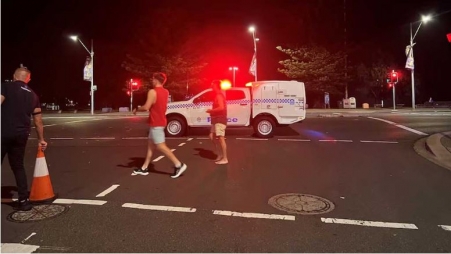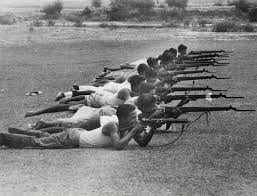INTERNATIONAL FLIGHT SAFETY SEMINAR
13-14 OCTOBER 2009
- Wing Commander Munim Khan Majlish, psc
INTRODUCTION
1. Safety is usually considered as a state free from any danger. In aviation it is generally regarded as being an absence of aircraft accidents. Though the elimination of accidents would be the most desirable; but we must acknowledge that such “perfect safety” is always an unachievable aspiration. The failures, omissions and errors may still occur in spite of the best efforts to avoid them. While it is not possible to completely eliminate the likelihood of harm or damage, it is obviously possible to control the processes, or events, or reasons which could lead to hazardous situations. The philosophy is that we should make an endeavour to minimize those factors that may be the cause of hazards. Our effort must be to ensure that the likelihood of being exposed to harm or damage is as low as possible in aviation arena.
2. Safety is the state in which the risk of injury to persons or of properties is reduced to, and maintained at or below, an acceptable level through a continuing process of hazard identification and risk management . The purpose of safety in aviation has always been the most important issue in all aviation activities. With this noble principle in mind the purpose of Air Traffic Services is to control aircraft efficiently, expeditiously and obviously safely .
3. Air Traffic Management (ATM) community is formed by people, systems and procedures . We can not deny any one aspect of this unique community. Therefore, an integrated approach by all the components of ATM community is desirable for achieving safety. While emphasizing on safety it must also be remembered that we should focus on increasing users’ flexibility and maximize operating efficiencies.
4. Safety management process should be standardized and practiced by all the users. Therefore, the state should ensure that a safety management programme is being implemented for achieving the acceptable level of safety. The safety management programme should include monitoring of overall safety levels, safety reviews, safety assessments and safety enhancing measures. When the safety programme is implemented by all the users of ATM community, we may term the environment as a positive safety culture. A positive safety culture focuses on determining risks rather than identifying persons to discipline. Here the main emphasize is given on taking adequate proactive rather than reactive measures, so that the same hazardous incident never happens in aviation for the same reason again in future.
AIM
5. To apprise about safety management in Air Traffic Services in order to suggest a possible ATS safety management program for Bangladesh.
SAFETY OBJECTIVES
6. The aviation safety is an evolving science. The overall aviation safety objective is to ensure that a safe, secure and efficient air navigation system is available at all levels of operations. To implement this objective of aviation the International Civil Aviation Organisation (ICAO) has set its safety objectives as well. As an extensive participant of aviation arena Bangladesh (BAF) has also formulated its own safety principles.
a. ICAO Safety Objectives . ICAO works to achieve its vision of safe, secure and sustainable development of civil aviation through cooperation amongst its member state(s). The objectives of ICAO ATS safety management are to ensure that:
(1) The established level of safety applicable to the provision of Air Traffic Services (ATS) within an airspace or at an aerodrome is met; and
(2) Safety-related enhancements are implemented whenever necessary.
b. BAF Flight Safety Objectives . The objectives of BAF flight safety are to:
(1) Prevent aircraft occurrences,
(2) Eliminate material and human weaknesses as cause of occurrences, and,
(3) Maintaining an aggressive flight safety program.
AIR TRAFFIC MANAGEMENT OPERATING CONCEPT
7. Experience in aviation hazards and lessons learnt in investigation of aircraft accidents have emphasized the importance of managing safety in systematic, proactive and explicit manner : Addressing safety in this approach will ensure that over the period safety becomes an integral part of the day-to-day affairs of both organisation and individual involved in it. Let us explain these terms in particular.
a. Systematic. Systematic means that safety management activities will be conducted in accordance with a pre-determined plan applied in a consistent manner throughout the organisation.
b. Proactive. Proactive means the adoption of an approach which emphasises prevention through the identification of hazards and the introduction of risk mitigation measures before the risk-bearing event occurs and adversely affects safety performance.
c Explicit. Explicit means that all safety management activities should be documented, visible and performed independently from other management activities.
8. ATM Community. The aviation system includes the airport, air traffic control, maintenance, cabin crew, ground operational support, dispatch etc. Sound safety management must address all parts of the system. Before we know further details about the ATM safety environment, we may refresh our memory about the ATM community. ATM community includes:
a. Aerodromes.
b. Airspace providers.
c. Airspace users.
d. ATM service providers.
(1) State agencies
(2) State-owned self-financing corporations
(3) Regional ATM service providers
e. ATM support industry.
f. International Civil Aviation Organization (ICAO).
g. Regulatory authorities (CAAB or BAF).
h. States (s).
9. ATM System. Aviation is a total system that includes everything needed for safe flight operation. There is a significant degree of interdependence between ground-based and airborne components in ATM system. This interdependence would become more significant in future. As such enhancements to safety and the efficiency of the development of a co-operative environment should be facilitated to fulfill the expectations of all the ATM community. This will definitely improve safety in every sphere in a balanced manner. People, technology and procedures are inter-related in aviation environment . We are unable to exclude any one end of this unique triangle. Indeed only an integrated approach of all the functions can achieve the desired goal in aviation.
Figure 1. ATS System
10. ICAO Safety Mechanism. Aviation is not confined within the boundaries of a state. Indeed the state(s) are otherwise committed to ICAO to implement adequate measures for ensuring aviation safety of international standard. State(s) are also responsible for providing a regulatory safety framework for implementation of ICAO Standard and Recommended Practices (SARPS) within the airspace and at aerodromes for which it has responsibility. Generally, these responsibilities include both regulatory functions (licensing, certification etc) and safety oversight functions to ensure compliance with regulatory requirements . A state safety management responsibility sometimes may extend beyond regulatory and oversight functions. In many state(s), the state is both the safety regulator and a service provider. Where a state is the regulatory authority and a provider of operational services, like Bangladesh, a clear distinction must be made between the two functions. The sequences of safety measures taken by ICAO are as following:
a. Regulation.
b. Safety Oversight.
c. Unified Strategy.
d. Safety Management System (SMS).
(1) Risk management.
(2) Non punitive reporting.
(3) Safety commitment.
(4) Corrective action.
e. Other programme.
Let’s look at the diagram below how ICAO safety mechanism works. ICAO formulates the universal safety oversight programme, which is to be followed by the contracting states. States formulate their individual sate safety oversight programme as per the national requirements, which is to be observed by the operators and service providers.
Figure 2. ICAO Safety Mechanism
11. Safety Initiatives. All contracting states of ICAO are keen to support the Global Aviation Safety Plan (GASP) to improve safety levels world wide. Bangladesh is also closely working to support the various element of GASP within Bangladesh. Let us look at how different safety initiatives are implemented in the following diagram :
• Global Aviation Safety Plan (GASP)
• Commercial Aviation Safety Team (CAST)
• European Strategic Safety Initiatives (ESSI)
• Regional Aviation Safety Team (RAST)
• South Asia Regional Aviation Safety Team (SARAST)
• Cooperative Development for Operational Safety & Control of Airworthiness Programme
• National Aviation Safety Team (NAST)
Figure 3: Safety Initiatives
12. BAF Safety Mechanism. BAF is greatly committed to ensure safety in aviation. Let us have a glance at the diagram below about BAF safety mechanism . Director of Flight Safety is the regulatory authority for formulating BAF safety oversight programme, which is to be followed by the bases. Each BAF base also formulates base safety oversight programme based on the operational requirements, which must be implemented by the flying squadrons, ATC squadrons, radar squadrons and maintenance squadrons etc.
Figure 4. BAF Safety Mechanism
SAFETY IN AIR TRAFFIC MANAGEMENT
13. ATS plays an important role in ensuring overall aviation safety. The responsibilities for implementing the safety management system in ATS are the responsibility of the State(s) and Operator (Airlines, ATS services provider, aerodrome operator). Uniform safety standards and risk, and safety management practices should be applied systematically. Safety management process should be standardized and should be practised in day to day affairs. A safety management system should clearly define lines of safety accountability throughout the system (operator/maintenance organization/air traffic services provider/certified aerodrome operator), including a direct accountability for safety on the part of senior management.
14. The acceptable level of safety shall be established by the state(s) concerned. The state(s) is to implement the safety management system and safety programme. Therefore, ATS safety management system has got primarily two basic concepts. These are:
a. Safety Management System . It refers to a systematic approach of managing safety, including the necessary organisational structures, accountabilities, policies and procedures.
b. Safety Programme. It is an integrated set of regulations and activities aimed at improving safety. A state’s safety programme embraces those regulations and directives for the conduct of safe operations from the perspective of aircraft operators and those providing air traffic services, aerodromes, and aircraft maintenance .
15. Safety in ATM system should adapt the management approach to human and organisational risks. It should also be applied throughout the entire organization uniformly. Safety management system provides organizations with:
a. The capacity to anticipate and address safety issues before they lead to an incident or accident.
b. The ability to deal effectively with accidents and incidents so that valuable lessons are applied to improve safety efficiency.
c. The capability to reduce cost or damages through the proactive management of risks.
16. Ten Steps In safety Management System . Formulating an appropriate safety management system is an overwhelming task. A systematic approach is required to ensure that the elements necessary for building an effective system are considered. Ten steps may be considered for implementing a safety management system in any ATS environment. The steps may be addressed gradually. This would allow the organization to adapt to, and become acquainted with, the requirements and results of each step before proceeding to the next one. These are:
a. Planning
b. Management’s commitment to safety
c. Organisation
d. Hazard identification
e. Risk management
f. Investigation capability
g. Safety analysis capability
h. Safety promotion and training
j. Safety management documentation and information management
k. Safety oversight and performance monitoring
17. Primary Considerations. While following the ten steps for implementing the safety management system the State(s) concerned should keep in mind the following primary considerations:
a. Implementation of the day to day safety oversight management by the ATS service providers.
b. Establishment of systemic ATS safety management programme with defined levels and objectives.
c. Prior to any significant change(s) to the safety-related ATS system, a safety assessment should be carried out so that an acceptable level of safety may be obtained.
d. The State(s) concerned should establish the acceptable level of safety to be achieved. The acceptable level of safety should be measured through the achievement of objective parameters. These are generally expressed in terms of the frequency of occurrences of some event causing harm. The typical safety performance indicators are as follows :
(1) Maximum probability of undesirable events (collision, loss of separation or runway incursion).
(2) Maximum number of accidents per flight hour.
(3) Maximum number of incidents per aircraft movement.
(4) Maximum number of accidents per year.
(5) Max number of serious incidents per flight hour.
(6) Maximum acceptable number of separation losses per aircraft movement.
(7) Maximum number of valid short-term conflict alerts (STCA) per aircraft movement.
(8) Maximum number of fatalities due to aircraft accidents per Year.
18. Additional Considerations. In addition to the primary considerations some additional aspects should also be kept in mind while establishing safety management system. These are as follows:
a. Safety organisation (How ATS is organized).
b. Risk management and incident reporting system.
c. Emergency response/procedures.
d. Safety investigations for maximum effectiveness; management should focus on determining risks rather than identifying persons to discipline (safety culture).
e. Human factors issues affecting human performance in ATS.
19. Safety Management Cycle . Safety management system in ATS should start with the identification of hazard. Thereafter, it should follow a series of actions which may be terminated with the identification of a new hazard. The cycle should continue as long as the ATS organisation is functioning. The figure 5 below illustrates the progression of ATS safety cycle. Hazard identification is the critical first step in managing safety. Evidence of hazard is required and may be obtained in a number of ways from a variety of sources. Each hazard identifies must be evaluated and prioritized. The evaluation requires the compilation and analysis of all available data. The data is then assessed to determine the extent of the hazard. Having validated a safety deficiency, decision must be then made as to the most appropriate action to avoid or eliminate the hazard or reduce the associated risks. Care must be taken so that the solution does not introduce any new hazard. This is the process of risk management.
Figure 5: Safety Cycle
ATS SAFETY MANAGEMENT PROGRAMME
20. All the activities undertaken in any ATS safety management programme should be fully documented. All these documentations must also be retained for such period of time as is specified by the appropriate ATS authority. ATS safety management programme should:
a. Identify actual and potential hazard(s) and determine the need for remedial action.
b. Ensure that remedial action(s) necessary to maintain an acceptable level of safety is implemented.
c. Provide continuous monitoring and regular assessment of the safety level.
21. An ATS safety management programme should include the following activities with respect to the provision of air traffic services:
a. Monitoring of overall safety levels and detection of any adverse trend.
b. Safety reviews of ATS units.
c. Safety assessments in respect of the planned implementation of airspace re-organisation, the introduction of new equipment system(s) or facilities, and new changes of ATS procedure(s).
d. A mechanism for identifying the need for safety enhancing measures.
Monitoring of Safety Level
22. ATS safety management programme should be able to monitor actual or potential safety hazards and deficiencies related to the provision of ATS. The monitoring system should also include monitoring of procedures; communications, navigation and surveillance systems, and other safety significant systems and equipment; and controllers’ work loads. The monitoring process should adapt the following principles:
a. Collection and Evaluation of Safety Related Data.
(1) Relevant data for use in ATS safety monitoring programme should be collected from as wide a range of sources as possible.
(2) Safety related consequences of particular procedures or systems may not be realized until after an incident has been occurred. The appropriate ATS authority should establish a formal incident reporting system to facilitate the collection of information on actual or potential safety hazard.
b. Review of Incidents and Reports.
(1) Safety-related reports concerning the operation of ATS are to be systematically reviewed by the appropriate ATS authority.
(2) Reports concerning the serviceability of ATS facilities, such as failures and degradations of communications, surveillance and other safety significant systems are to be systematically reviewed in order to detect any trend in the operations of such system which may have an adverse effect on safety.
Safety Reviews
23. Safety reviews of ATS system should be conducted on a regular basis by personnel qualified through training, experience and expertise, and having a full understanding of relevant standard and recommended practices, procedures for air navigation services, safe operating practices, human factor principles, and regulatory, operational and technical framework of ATS organization. The scope of ATS safety reviews are as follows:
a. Regulatory issues.
b. Operational/technical issues.
c. Licensing and training issues.
24. Regulatory Issues . The regulatory issues of safety review include ensuring:
a. The ATS operational manuals, ATS unit instructions and air traffic control co-ordination procedures etc are complete, concise and up-to-date.
b. The ATS route structure where applicable provides:
(1) Adequate route spacing.
(2) Crossing points for ATS routes located so as to reduce the need for controllers’ intervention.
c. The separation minima used in the airspace are appropriate and all the provisions applicable to those minima are being complied with.
d. The Provisioning for adequate visual or radar observation of the manoeuvring area.
e. Appropriate procedures and measures for minimizing runway incursions.
f. Appropriate procedures for low visibility aerodrome operations.
g. Traffic volumes and associated controllers’ work load do not exceed, defined safety levels and that procedures are in place for regulating traffic volumes wherever necessary.
h. Procedures to be applied in the event of failures or degradations of ATS systems, including communications, navigation and surveillance systems are practicable and will provide an acceptable level of safety.
j. Procedures for the reporting of incidents and other safety related occurrences are implemented, that the reporting of incidents is encouraged. Such reports are reviewed to identify the need of any remedial action.
25. Operational And Technical Issues For Safety Reviews . There are some operational and technical issues that are to be considered in ATS safety management programme. These are as follows:
a. General Considerations.
(1) The environmental working conditions meet established levels of temperature, humidity, ventilation noise and ambient lighting and do not adversely affect controllers’ performances.
(2) Automation systems generate and display flight plan, control and coordination data timely, accurate and easily recognizable manner and in accordance with human factor considerations.
(3) Equipment are designed and positioned in the working places in accordance with ergonomic principles.
(4) Communications, navigation, surveillance and other safety significant system and equipment:
(a) Are tested for normal operations on a routine basis.
(b) Meet the required level or reliability and availability.
b. Reliability. Reliability is the probability that a device or system will function without failure over a specified time period or amount of usage.
c. Availability. Availability is the ratio of percentage of the time that a system is operating correctly to the total time in that period and also fulfils the following:
(1) Providing the timely and appropriate detection and warning of system failures and degradations.
(2) Documentation on the consequences of system, sub system and equipment failures.
(3) Measures to control the probability of failures.
(4) Adequate back-up facilities and or procedures for system failure.
(5) Detailed recording of systems and equipment serviceability are kept and reviewed periodically.
26. Licensing And Training Issues For Safety Reviews. Licensing and training issues are very important in safety management in ATS. Following issues are to be considered for safety in ATS management programme:
(1) Controllers are adequately trained and properly licensed.
(2) Controllers’ competency is maintained by adequate refresher training, including the handling of aircraft emergencies.
(3) Controllers, where the ATC is staffed by teams are provided with relevant and adequate training in order to ensure efficient team work.
(4) The implementation of new procedures, and new communications, surveillance and other safety significant equipment is preceded by appropriate training.
(5) Controllers’ competency in the English language is satisfactory in relation of providing ATS to international air traffic.
(6) Standard phraseology is used.
Safety Assessment
27. Safety assessment is a systematic approach to evaluate the acceptability of risk and severity. We need to address both these factors. If the initial assessment of the risk indicates that it does not satisfy the safety assessment criteria, it will be necessary to re-evaluate the risk in order to determine the mitigation measures for the desired effect. It means that some of the previous steps should be repeated. The process should be repeated more than once, until a satisfactory combination of mitigation measures is found. Any new proposals should be implemented only when the assessment has shown that an acceptable level of safety will be attained .
Figure 6. Safety Process
28. Scope of Safety Assessment. Safety Assessment calculates the risk of accidents index. It requires full commitment of the State(s), ATS services Providers, ATS Users and Operators to assess the system. If safety meets expected danger levels only then change is feasible. A safety assessment should be carried out in respect of proposals for significant airspace re-organisation, for significant changes in the provisions of ATS procedures applicable to airspace, and for the introduction of new equipment such as:
a. Introduction and/or planning changes to the ATM.
(1) Reduction of separation minimum to be applied within airspace.
(2) New procedure, including instrument approach procedures or departure and arrival procedures to be applied within airspace.
(3) Reorganisation of the ATS route structure.
(4) Reorganisation of airspace.
(5) Physical changes of the airfield layout.
b. Implementation of new systems like communications, surveillance or other safety-significant systems.
c. Calculation of the risk of accidents index.
d. Human, procedural, hardware/software, and operational environment issues.
29. Safety Assessment Significant Factors . Safety assessment should consider all relevant factors as determined to be significant including:
a) Types of aircraft and their performance characteristics.
b) Traffic density and distribution.
c) Airspace complexity, ATS route structure and classification of airspace.
d) Aerodrome layout including runway configuration, runway length and taxiway configuration.
e) Type of air-ground communications and time parameter for communication dialogues, including controllers’ intervention capability.
f) Type and capabilities of surveillance system.
g) Any significant local or regional weather phenomena.
Risk Mitigation and Safety Enhancing Measures
30. Risk Mitigation Measures. The identification, analysis and elimination (and/or mitigation to an acceptable or tolerable level) of those hazards, as well as the subsequent risks, that threaten the viability of an organisation is called the risk mitigation measures . Therefore, after assessing the safety environment, if the prevailing risk does not meet the predetermined acceptability criteria, an attempt should be made to reduce it to a level which is acceptable, using appropriate mitigation procedures. The identification of appropriate risk mitigation measures requires proper understanding of hazard and the factors contributing to its occurrence. The risk mitigation measures may work through reducing the probability of occurrence, or the severity of the consequences, or both. Achieving the desired level of risk reduction may require the implementation of more than one mitigation measure as follows:
a. Revision of the system design.
b. Development and implementation of Safety Requirement (s) or devices.
c. Providing adequate warnings.
d. Implementation of standards.
e. Modification of operational procedures.
f. Revision of personnel assignments or staffing arrangements.
g. Revision of training of personnel to deal with the hazard.
31. Safety Enhancing Measures. The following safety enhancing measures are to be taken in ATM safety management:
a. Any actual or potential hazard related to the provisions of ATS within airspace identified through an ATS safety management activity should be assessed and classified by the appropriate ATS authority for its risk capability.
b. Except when the risk can be classified as acceptable, the ATS authority concerned should, as a matter of priority implement appropriate measures to eliminate the risk to a level that is acceptable.
c. If it becomes apparent that the level of safety may not be achieved, the ATS authority should implement possible remedial measures.
d. Implementation of any remedial measure should be followed by an evaluation of effectiveness of the measure in eliminating a risk.
Positive Safety Culture
32. ‘Safety Culture’ is that assembly of characteristics and attitudes in organizations and individuals which establishes that, as an overriding priority, safety issues receive the attention warranted by their significance . Effective safety management requires more than setting up an organizational structure and promulgating rules or directives specifying the procedures to be followed. It requires a genuine commitment to safety on the part of senior management, and an organizational culture such that staffs at all levels are safety conscious in their approach to their tasks. This is also called the positive safety culture. A positive safety culture shall practice the safety management programme and implement the safety enhancing measures after assessing the state of its safety level. In a positive or just culture Actions, omissions and decisions expected from someone commensurate with their training and experience are not prosecuted; but gross negligence or willful misconduct are obviously not tolerated. Following principles are needed to be taken into consideration in a positive safety culture :
a. Senior management places strong emphasis on safety as part of the strategy of controlling risks.
b. Decision-makers and operational personnel appreciate a realistic view of the short and long term hazards involved in the organisation’s activities.
c. Senior positions:
(1) Promote a climate in which there is a positive attitude towards criticisms, comments and feedback from lower levels of the organization on safety matters.
(2) Do not influence /force their views on subordinates.
(3) Implement measures to contain the consequences of identified safety deficiencies.
d. Senior management promotes a non-punitive working environment (not immunity).
e. There is an awareness of the importance of communicating relevant safety information at all levels of the organisation (within and outside).
f. There are realistic and workable rules relating to hazards, to safety and to potential sources of damage.
h. Personnel are well trained and understand the consequences of unsafe acts.
j. Prevailing of low incidence of risk-taking behaviour, and a safety ethics which discourages such behaviour.
33. Characteristics of Different Safety Cultures . Let us have a glance on the figure 7 below about the comparative study of different safety cultures.
Figure 7. Characteristics of Different Safety Cultures
SAFETY STATE IN BANGLADESH
34. In Bangladesh, the state or Civil Aviation Authority Bangladesh (CAAB) is the regulatory authority and at the same time a provider of operational services. But a clear distinction is never made between the two functions as directed by ICAO . The airspace over our territory is limited, but in absence of ‘National Airspace Safety Committee’, the existing governing or regulatory body is unable to control and regulate its use by different users. Different civil military organisations are using the airspace in an uncoordinated way for declaring ‘Danger Areas’, ‘Restricted Areas’, ‘Land Strips’, and ‘Water Strips’; or making High Rise Structures around the airfield etc. We are yet to establish the acceptable level of safety to be achieved in the country or in BAF. We have not yet formulated the ‘Safety Manual’ by either CAAB or BAF. The position of ‘Safety Manager’ is not yet created at all the airports/aerodromes in the country. Though we have given adequate importance to safety issues in the training curriculum for all personnel of aviation; but our aviators are yet to experience a non-punitive environment or a positive safety culture.
CASE STUDY OF DIFFERENT INCIDENTS
35. Major accidents are very rare in aviation. But when disaster strikes we are in the race to find out the cause whether it is due to human, technology or system. But our main objective should be to make sure that it never happens for the same reasons once again in future. Three different incidents in aviation in different ATS environment are examined in the following paragraphs to determine the facts and to assess the reasons of such unwanted incidents.
Case study 1: Skidding of DC-10 Outside the Runway
36. On 01 July 2005 a DC-10-30 (BBC-048) had departed Dubai and reached over its destination ‘Chittagong Shah Amanat International Airport’ in time. Confident and pretty senior captain of the aircraft had no problem in reaching the destination (CTG VOR) and was cleared for VOR-DME-ILS Approach (APP) Runway (RWY)-23. The visibility was adequate to execute the approach for landing. Only the aircraft was not in line with the centre line of the runway on inbound as seen by the Tower Controller. It was approaching oblique and quite high for making a safe landing. About half of the runway was crossed when the aircraft was noticeably higher than the decision height. Pilot was cautioned by the Air Traffic Controller to carry out a missed approach and conduct instrument approach procedure once again. The apparently confident and experienced captain felt otherwise and attempted to make an impossible endeavour. The result was nothing but skidding of the aircraft out of the runway and trampled in nearby swampy ground. The wings of the aircraft just could not resist becoming disabled by its learned operator. The analyses of the incident are described below:
a. Situation.
– On 01 July 2005
– DC-10-30 (BBC -048)
– Arrived at CTG from Dubai following B-465
– Cleared for VOR-DME-ILS APP RWY-23
– Required Meteorological Minima was prevailing
b. Incident.
– Aircraft was not in line with centre line of the RWY
– The ac was oblique and quite high for making a safe landing
– Pilot was not maintaining the glide slope
– Half of the RWY was crossed when the aircraft was noticeably higher than the Decision Height (DH)
– Pilot was cautioned by Air Traffic Controller to carry out missed approach
– Captain attempted to make an impossible endeavour
c. Result.
– Aircraft skidded of out of the RWY and trampled in nearby swampy ground
– Damages to the aircraft
d. Assessments.
– Pilots.
• Probably didn’t follow the correct instrument approach profile
• Apparently P-I-C was over confident and probably panicky
• Pilot denied TWR advice to make a Missed Approach
• Misjudged the glide path
• Misjudged the performance of aircraft
– ATC Controller.
• Advised the pilot to execute missed approach
• Limitation of giving mandatory instructions in procedural control
Case study 2: Near Air miss at Jessore Airfield
37. On 27 April 2008 BEA-101 (HS-748, P-I-C Albert and First Officer Ahad) carrying cargo contacted JSR TWR at 0301 UTC. BEA-101 was airborne from CTG at 0218 maintaining FL 80, ETA JSR 0337 and later gave revised ETA as 0324. The aircraft was initially cleared to descend FL60 due to traffic at Training Area ‘South’ of Jessore and later was cleared to descend 3000 ft due SPD-523 (PT-6) which was coming overhead at 2000 ft for carrying out instrument approach (NDB Approach RWY-16). The P-I-C acknowledged the instructions and also the traffic information. At 0320 BEA-101 requested for visual approach. The controller had asked BEA-101 to report beginning of down wind RWY-16 at 3000 ft due to SPD-523 that was outbound of ‘Holding’ at 2000 ft. The P-I-C of BEA-101 replied wrongly as passing 2000 ft for 1500 ft. The controller had instantaneously asked the aircraft to maintain 3000 ft and remain standby for descent that the P-I-C had acknowledged accordingly. Indeed BEA-101 descended from 3000 ft to circuit altitude without the TWR clearance and crossed the level of SPD-523 approximately at half a mile distance. It was revealed from the conversations with the pilots of BEA-101 later on that they had misjudged the traffic situation. They thought that SPD-523 had proceeded outbound of ‘Letdown’ when it had reported its position outbound of ‘Holding’. When they were cleared for visual approach, assuming that they were cleared of SPD-523, BEA-101 had left 3000 ft and started descending. Capt Albert had also mentioned that he had difficulty in understanding the word ‘Three’ in Bangladesh in the past. The analyses of the incident are described below:
a. Situation:
– On 27 April 2008
– PT-6 (SPD-523) was proceeding outbound of Holding for NDB App RWY-16 at 2000 ft
– HS-748 (BEA-101) was cleared to descend 3000 ft and to report over VOR
– BEA-101 requested for Visual Approach
– Controller asked BEA-101 to maintain 3000 ft and report ‘Down Wind’ due to close proximity of SPD -523
– VMC was prevailing during that time which was feasible for circuit flying
– Pilot had difficulty of interpreting language in Bangladesh
b. Incident:
– BEA-101 misread initial clearance of 3000 ft and replied as 2000 ft, but was pronounced as 3000 ft, and the Tower Controller had understood as 3000 ft
– When SPD-523 proceeded outbound of Holding, BEA-101 thought that it had gone outbound of Letdown
– Assuming it is cleared of traffic BEA-101 descended to 1500 ft in Down Wind leg without clearance from Tower
c. Results:
– Both the aircraft came as close as half a mile of each other
– Both pilots took evasive actions and avoided collision
d. Assessments:
– Pilot
• Both pilot and controller have barrier of language
• Assuming traffic instead of clarifying from TWR
• Poor orientation of traffic situation
• Deemed to lower height without TWR clearance
– Controller
• Controller used non-standard phraseology (did not mention ‘Negative’, or ‘Stop Descent’ etc)
– Airspace
• Different category of aircraft operate simultaneously
• Aircraft operated by pilots of different countries
• Non availability of Surveillance radar restricts controller enforcing compliance with instructions
Case study 3: Mid Air Collision
38. On July the 1 st in 2002 a party of school children set off from Moscow for a holiday in Spain. At night their jet crashed into another cargo aircraft over Lake Constance in Swiss-German border. The unthinkable incident took place, the mid air collision in the nearly empty European sky at mid night. The analyses of the incident are described below:
a. Situation.
– On 01 July 2002
– TU-154 and B-757 flying in the mid of night crashed to each other in Swiss-German border over Lake Constance
– TU- 154 was airborne from Moscow bound for Barcelona, Spain
– B-757 of DHL cargo departed Italy for Brussels
– Swiss ATC (Sky Guard Centre) was responsible for managing ATS
b. Cockpit Situation.
– Unusual situation was prevailing
– Senior Check Pilot of airlines took position of Co-pilot with the Capt to check the performance of the cockpit crews.
– Fatal disagreement occurred in the cockpit in flight in crucial moment
c. ATC Situation.
– Busy schedule has ended at Sky Guard Centre
– Fresh controller Peter ‘X’ has taken over the watch
– The second controller went on break due to less traffic situation
– Technicians started upgrading software, so radar was operating on inferior back up system
– Information displayed on radar scope was less accurate
– Main radar provides visual and audio warning in case of two aircraft are close by 2 miles, but back up system does not
– Engineers had shut down the main telephone system for routine checking of the system
– Suddenly it became very busy for some delayed arrivals on holiday
– Peter ‘X’ was controlling both PAR and SRE simultaneously in two different scopes in two different freq
– Controllers at another centre had spotted the collision, but failed to inform Peter as telephone didn’t work
d. Incident.
– TU-154 was maintaining FL 360
– DHL requested to climb FL 360 to save fuel and was cleared by the controller (Peter ‘X’)
– Controller clears TU-154 to over fly at FL 360 when it was 5 min to cross each other (B-757)
– Both aircraft were at same level and in collision course
– Both TCAS gave warning when they were 50 sec apart ”Traffic 2 ‘O clock same level”
– Neither crews informed ATC about TCAS alert
– With 43 seconds to go Peter spotted the collision course and asked TU-154 to descend 1000 ft (FL 350)
– TCAS commanded TU to climb
– Capt wanted to follow TCAS (climb), but Company Senior pilot overruled and followed ATC (descent)
– TU continued to descend in contradiction to TCAS
– Capt of B-757 followed the TCAS instruction to descend immediately
– Capt of B-757 had no time to inform ATC about immediate TCAS action of descending
– Both aircraft descended at the same rate on a collision course
– Both increased descending as instructed by the controller and TCAS respectively
e. Assessments.
– Two aircraft on collision course is normal, but not when the controller is working in two scopes, and the equipment are not functioning properly.
– On board computer (TCAS) can save from collision if the pilots follow the instructions.
– Any deviation or unavoidable actions are to be reported to ATC immediately.
RECOMMENDATIONS
39. Safety needs to be assessed in accordance with appropriate consideration and globally. For achieving the excellence in aviation safety following propositions are recommended:
a. Essential for Bangladesh.
(1) A systematic approach is required to ensure the safety in ATS management system in Bangladesh.
(2) Both CAAB and BAF (Flt Safety) should formulate Safety Manual/Checklist and publish at the earliest.
(3) The joint committee (National Airspace Safety Committee) of civil and military should be formed to oversee the safety programme in Bangladesh.
b. Desirable for BAF.
(1) Directorate of Flight Safety should have a separate division to oversee the safety in ATS management system in BAF.
(2) An expert on ATS management system working independently (Safety Manager) should be detailed at the bases to oversee the safety programme.
(3) Training of expertise on ATS safety Management system to act as Safety Manager and formulate Safety management Programme for BAF.
(4) Implementation of ATS safety management programme and establishment of acceptable levels of safety.
CONCLUSION
40. The expression “ATS system” may be seen as the totality of the hardware, software and personnel required to operate the system, together with the standards and recommended practices and procedures, which govern its operation. Nobody doubts that Air traffic controllers are simply dedicated to the safety of flight and aircraft operations. An ATCO believes that he is the best friend of pilots; because he is ever concerned for the safety of an aircraft and its occupants. However, nothing is immune to mistakes- Humans, the technology, the overall system. We must try to learn from the past disasters. Presently the volume of air traffic is rapidly increasing. It will probably be double in fifteen to twenty years. And the sky will inevitably be more prone to disasters in future. It will be like that an ATCO has probably solved one conflict and the next instance will be busy in solving another potential risk. We should keep a continuous monitoring of the safety in ATS management. Then review the situation and assess accordingly. Assessment should be in accordance with globally standardized safety management process and practices. We should focus on the Implementation of the pragmatic approach of safety programs: Keeping it simple- Not overdoing things; re-using/testing as much as possible; not to make things theoretical. We must remember where we are coming from- it’s not a new idea. Safety has been an integrated part of our aviation environment for decades.
41. The complete elimination of risk is an unachievable goal. Even in organizations with the best of training programme and a positive safety culture, human operators will occasionally make errors. The best-designed and maintained equipment will occasionally fail. The ATS system must therefore, take account of the inevitability of errors and failures. It is important that the system be designed and implemented in such a way that, to the maximum extent possible, errors and equipment failures will not result in an accident in aviation.
42. The aviation is still the safest means of communication. But one has to be aware that because of the safest means; because of the most modern equipment that are being used; conflict may always happen. But our concern must be how do we stop that sequences happened in the mid air collision on 01 July 2002. Could it happen here? The answer we are looking for is obviously “No”. A professional air traffic controller will think many moves ahead and avert disasters. An alert ATCO will ensure that the ATS system is as efficient as it is possible ever.
সর্বশেষ এডিট : ৩০ শে অক্টোবর, ২০০৯ রাত ৮:১৯


 অনুগ্রহ করে অপেক্ষা করুন। ছবি আটো ইন্সার্ট হবে।
অনুগ্রহ করে অপেক্ষা করুন। ছবি আটো ইন্সার্ট হবে।








